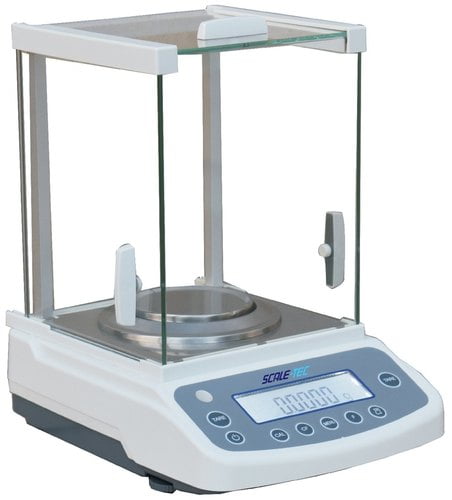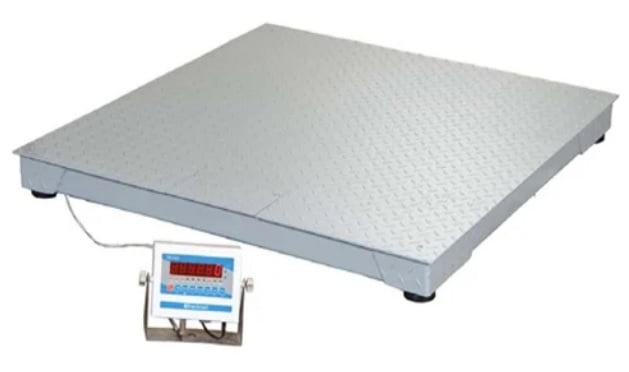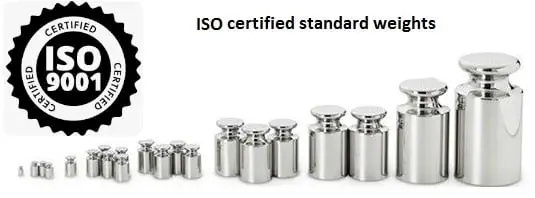Calibration of Weighing balance is essential part in the pharmaceutical Industry to achieve accurate weighing results of raw materials, semi or finished goods through out the product manufacturing cycle.
Table of Contents:
In the pharmaceutical Industry varying operating range of weighing balances are used from 50 mg (Analytical weighing Balance for weighing one tablet) to 1500 kg (Industrial Weighing Scale for weighing Lubricated granules IBC)


Definition of Calibration:
Calibration is the activity of checking the accuracy of measuring instrument by comparison with a standard and adjustment of the instrument to bring it into alignment with the standard.
Procedure for calibration of weighing balance
Calibration of Weighing balance is essential part in the pharmaceutical Industry to achieve accurate weighing results of raw materials, semi or finished goods through out the product manufacturing cycle. Any deviation in weighing measurement due to non-calibrated balance or scale can lead to product fails. To maintained the accuracy of balances or scales periodically scheduled calibration of weighing balance is required to overcome normal wear and tear caused by regular use.
Calibration of Weighing balance should be done by using ISO compliance certified traceable standard weights generally by OEM (original equipment manufacturer) or licensed third party service provider. Most of the company schedule calibration of their all balance at once to avoid multiple visits and minimize service charges from third party service providers.

The United States Pharmacopeia (USP) General Chapters <41> “Balances” specifies that a test weight of between 5 % and 100% of the balance capacity must be used when testing a balance for accuracy. For the Repeatability assessment test weight must be within the balance’s operating range.
Following test should be performed during calibration of Weighing balance
- Spirit level check (balance levelling)
- Zero error check
- Eccentricity or Corner load error
- Accuracy
- Linearity
- Repeatability or Reproducibility
Spirit level check (balance levelling) :
- Adjust the air bubble to the Centre of the inner circle of the indicator by rotating the two levelling screws at the rear base of the balance.
- Acceptance Criteria: Air Bubble must be in the Centre of the inner circle.
Zero error check :
- Close the sliding doors of the balance if available in case of Analytical balance and press the tare key and wait till LCD shows zero.
- Acceptance Criteria: LCD Should display zero on the LCD Screen.
Eccentricity or Corner load error :
- Corner load error means that there are differences in readings when weight is measured to the corner of weighing platform compared to in the Centre the balance.
- Take external standard certified weight and place on the Centre, front left, front right, back right back left side of the weighing pan and note down the weight for each position.
- Calculate and record the difference between the observed weight and the standard weight.
- Acceptance Criteria: Each Weighing shall not differ more than 0.1% of the actual weight.
Accuracy :
- Accuracy is represented how “good” a balance is performing. It can be defined as how close any measured weight to the standard weight.
- It also includes other factors like precision, trueness, and linearity of measurement.
- Take 5 kg, 10 kg, 20 kg, 50 kg, 100 kg external standard certified weight and place on weighing balance (for 100kg max capacity balance)
- Make sure that there is not any disturbance like vibrations or air flow present.
- Observe and record the readings.
- Calculate and record the difference between the observed weight and the standard weight.
- Acceptance Criteria: Each weighing should not differ by more than 0.1% of the actual weight.
Linearity :
- Linearity is the ability of the balance to show a linear relationship over the weighing range of the instrument between the standard weight and the displayed reading of balance within tolerance limit.
- A perfectly linear relationship would have linear regression correlation coefficient (R2) is 1
Repeatability / Uncertainty / Reproducibility/ Precision :
- Precision is the amount of variation observed during repeated measurements of the weight under the same conditions. It is expressed as a standard deviation (SD)
- The standard weight must be within the balance’s operating range.
- Repeat the procedure for total 10 times
- Observe and record the readings.
- Calculate the Standard Deviation (SD).
- Calculate the uncertainty using the following equation
Uncertainty = 2 x SD/ standard weight
- Calculate and record the difference between the observed weight and the standard weight.
- Acceptance Criteria: Each weighing shall not differ more than 0.1% of the actual weight and Uncertainty should not be more than 0.001.

Frequency for calibration of Weighing balance
- Calibration of Weighing balance should be performed monthly for best results.
- After installation or relocation of Weighing balance
- After any measure maintenance or breakdown.
- when balance not working properly.
- As per Standard operating procedure (SOP) for calibration of weighing balance in your organization
What is list count of balance?
Least count or minimum weight of a balance is unique to each individual balance and refers to the smallest sample size that can be weighed accurately.
what is difference between verification and calibration of weighing balance?
A calibration indicates the checking error of the instrument and compensates for any lack of trueness by applying a correction. A verification indicates that error in the measurement is within specified tolerance limit or within permissible error.
Calibration should be performed monthly while verification of Weighing balance should be done daily.